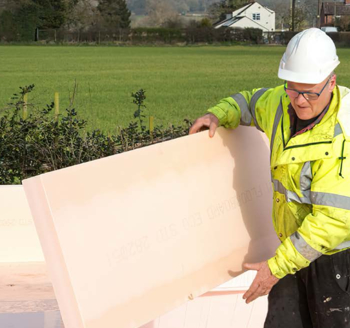Model
A model, is in its simplest terms a representation of something. The US “Department of Defence Modelling and Simulation (M&S) Glossary” expands this simple definition by suggesting that “a model can be [a] physical, mathematical, or otherwise logical representation of a system” (1998).
In design and construction the most familiar is the architectural model which is a smaller piece that represents the physical form of a building or a three-dimensional computer model which represents the physical form of the building in a digital format. The term may also be used in a similar way to the word example, where a street is modelled on that of the Edwardians, or where a village is the model of energy efficiency.
As such the term model is also used to indicate a simple description of a system or process that can be used in calculations or predictions of what might happen. In economic modelling, both theoretical and empirical models are common as well as financial models or in the social sciences, standard social science models (SSSM). This kind of calculation driven or process model to test outcomes is also used in construction for example with risk, energy or carbon models and can also be visualised in the same way as a three-dimensional digital model such as with modern integrated environmental models or building performance simulation models.
Model might also be used to describe a particular type of product, machine or item, that is slightly different from ones of the same type, for example a newer model car. It is also the word to describe a person representing a customer for clothing with catwalk or super models. The most important is that a model represents something else via some means or another, usually with the purpose of testing decisions, outputs and outcomes within this scope there is an increasing range of types of building models is use.
[edit] Related articles on Designing Buildings
Featured articles and news
Building Safety Regulator reforms
New roles, new staff and a new fast track service pave the way for a single construction regulator.
Cooling centres and cool spaces
Managing extreme heat in cities by directing the public to places for heat stress relief and water sources.
Winter gardens: A brief history and warm variations
Extending the season with glass in different forms and terms.
Restoring Great Yarmouth's Winter Gardens
Transforming one of the least sustainable constructions imaginable.
Construction Skills Mission Board launch sector drive
Newly formed government and industry collaboration set strategy for recruiting an additional 100,000 construction workers a year.
New Architects Code comes into effect in September 2025
ARB Architects Code of Conduct and Practice available with ongoing consultation regarding guidance.
Welsh Skills Body (Medr) launches ambitious plan
The new skills body brings together funding and regulation of tertiary education and research for the devolved nation.
Paul Gandy FCIOB announced as next CIOB President
Former Tilbury Douglas CEO takes helm.
UK Infrastructure: A 10 Year Strategy. In brief with reactions
With the National Infrastructure and Service Transformation Authority (NISTA).
Ebenezer Howard: inventor of the garden city. Book review.
The Grenfell Tower fire, eight years on
A time to pause and reflect as Dubai tower block fire reported just before anniversary.
Airtightness Topic Guide BSRIA TG 27/2025
Explaining the basics of airtightness, what it is, why it's important, when it's required and how it's carried out.
Construction contract awards hit lowest point of 2025
Plummeting for second consecutive month, intensifying concerns for housing and infrastructure goals.
Understanding Mental Health in the Built Environment 2025
Examining the state of mental health in construction, shedding light on levels of stress, anxiety and depression.
The benefits of engaging with insulation manufacturers
When considering ground floor constructions.
Lighting Industry endorses Blueprint for Electrification
The Lighting Industry Association fully supports the ECA Blueprint as a timely, urgent call to action.





















